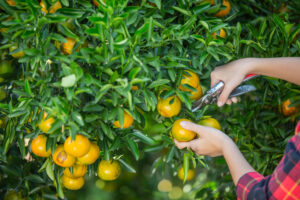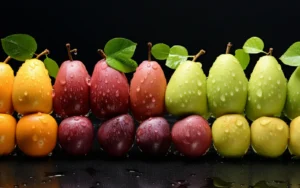

Fruit ripening is a natural process that leads to changes in the fruit's color, texture, flavor, and nutritional composition, making it more palatable and attractive for consumption. This process involves a complex series of biochemical and physiological changes, including the breakdown of starches into sugars, the softening of the fruit through the degradation of cell wall components, and the development of characteristic aromas and flavors. Here are some key aspects of fruit ripening:
1.Ethylene Production: Ethylene is a plant hormone that plays a crucial role in the ripening of many fruits. It acts as a signaling molecule, triggering the ripening process and coordinating various ripening-related activities within the fruit.
2.Color Change: As fruits ripen, they often change color due to the breakdown of chlorophyll and the synthesis of other pigments such as carotenoids (which provide yellow and orange colors) and anthocyanins (which provide red, blue, and purple colors).
3.Texture Softening: Ripening involves the enzymatic breakdown of pectin and other polysaccharides in the cell walls, leading to the softening of the fruit's texture. This makes the fruit easier to eat and more digestible.
4.Flavor Development: The transformation of starches into sugars enhances the sweetness of the fruit. Additionally, organic acids may decrease, and volatile compounds responsible for the fruit’s aroma and flavor are produced, contributing to the overall sensory experience.
5.Nutritional Changes: The ripening process can alter the nutritional content of the fruit, often increasing the levels of certain vitamins and antioxidants. For example, vitamin C content may increase in some fruits as they ripen.
There are two main types of fruits based on their ripening behavior:
6.Climacteric Fruits: These fruits continue to ripen after being harvested, due to the continued production of ethylene. Examples include bananas, apples, tomatoes, and avocados.
7.Non-Climacteric Fruits: These fruits do not ripen significantly after harvest and should be picked when fully ripe. Examples include strawberries, grapes, and citrus fruits.
Overall, fruit ripening is a vital process that ensures fruits are appealing, nutritious, and ready for consumption, playing a significant role in both natural ecosystems and agriculture.

Snow Star Ripening: Where nature’s chill meets the warmth of ripe flavors.